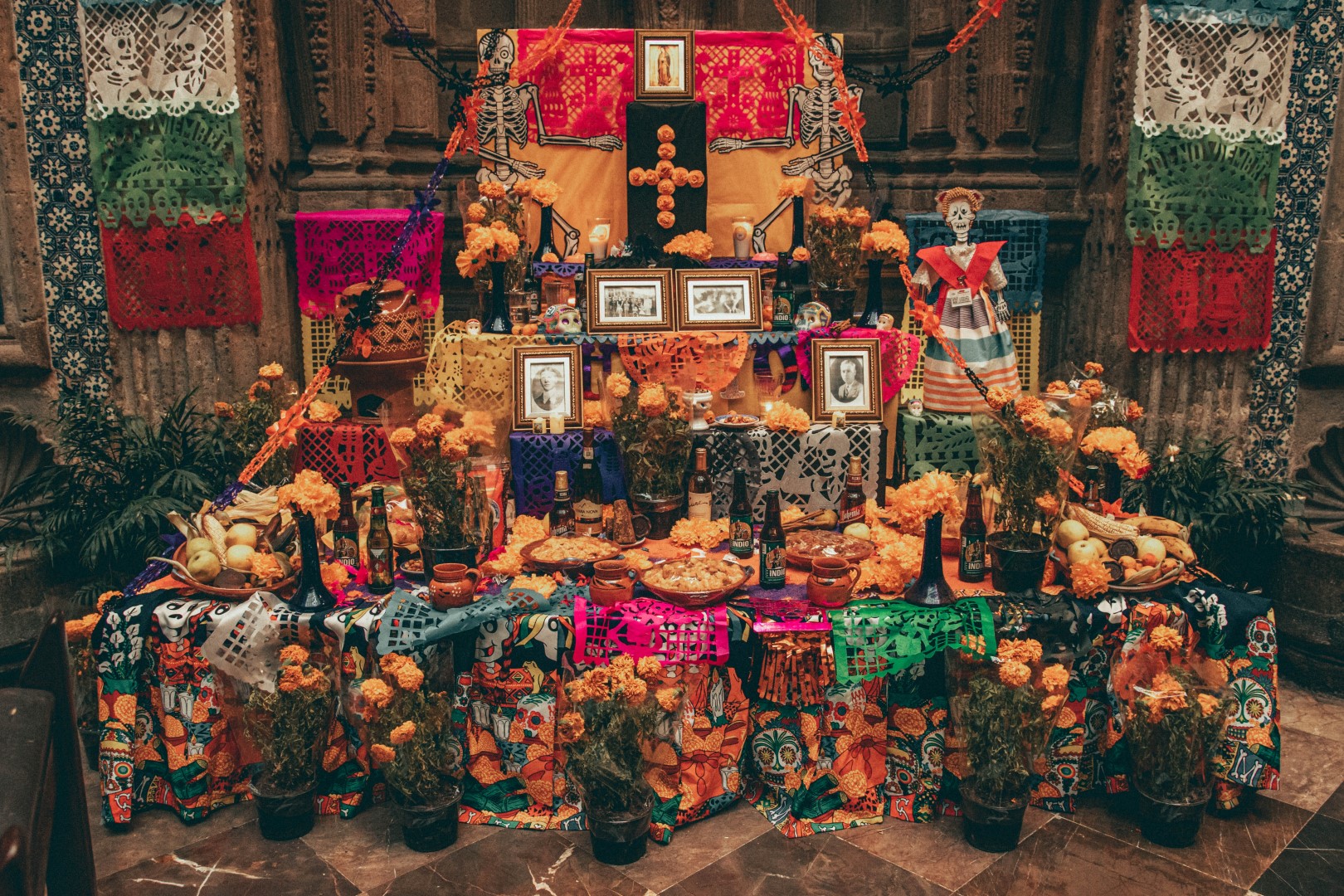Some may think that Halloween and the Day of the Dead are similar celebrations but even though the dates are close they are not related.

Some may think that Halloween and the Day of the Dead are similar celebrations but even though the dates are close they are not related. Halloween and the Day of the Dead are heavily imbued with pagan elements and with time have adopted a syncretic nature. However, Halloween is of Irish origin and closely related to crops and the harvest season. The Day of the Dead is from Meso-America, and after 1492 it was influenced by European Christianity, resulting in a syncretism that can be witnessed for instance in the elements utilized on the ofrendas or altars.
The main element of the Day of the Dead tradition, the ofrenda, can include a picture (or pictures) of the deceased together with favorite objects from their lives, for instance, food, drinks and even accessories such as hats. There may be differences in how ofrendas are built. Within the Christian tradition, the altar is a three-level display representing the militant, purging and triumphant Church. In the pre-Hispanic tradition, the altar includes skulls, food and drinks, whereas the Christian tradition includes a cross and fruits like mandarins to symbolize the Church’s sacraments that make life sweeter and more bearable.
Another difference between the modern and the ancient tradition is that the latter stresses death through skulls and the famous Catrina, the elegant and always impeccable skeleton, with a thing for ultra-heavy make-up and oversized hats. With the Catrina, there is usually the Catrin, a serious and less prominent male skeleton.
Last year an ofrenda or altar was built by the Embassy of Mexico in Finland in cooperation with the National Museum of Finland. It was a syncretic one. It mixed the ancient tradition of skulls and skeletons with Christian elements like candles dedicated to saints and images of Our Lady of Guadalupe.
Since the ancient tradition included the superstitious belief that the dead will come back to the world, preparing and offering food for the deceased is a must. These dishes usually include mole (a heavily spiced paste based on chocolate and chili) and the bread of the dead, which is a butter-based and very soft orange-flavored bread usually enjoyed with a hot beverage like chocolate. The idea was to tempt the dead to come back to share a special day with the living (usually gathered in cemeteries). The common joke is that Mexican food is so great that even the dead want to come back to enjoy it once more.

In 2019, an altar was also featured in A World That Wasn’t There exhibition at the National Museum in Helsinki. It was made to honor the memory of Miguel León-Portilla, an internationally re-known Mexican historian and researcher, who passed away last autumn. Fluent in Nahuatl, León-Portilla not only investigated the Aztec’s language but also their way of life and especially their poetry.
He was also an indigenist, interpreting and defending the point of view of those considered to have been defeated by a foreign power.
Another important Mexican character who passed away last year and was remembered at the National Museum was Francisco Toledo, the Oaxacan painter and graphic artist amongst the most acclaimed in Mexico.
Toledo liked to design kites and thought they might be useful during the Day of the Dead, guiding the deceased toward their altar.
Article by: Mily Vazquez Harkivi

